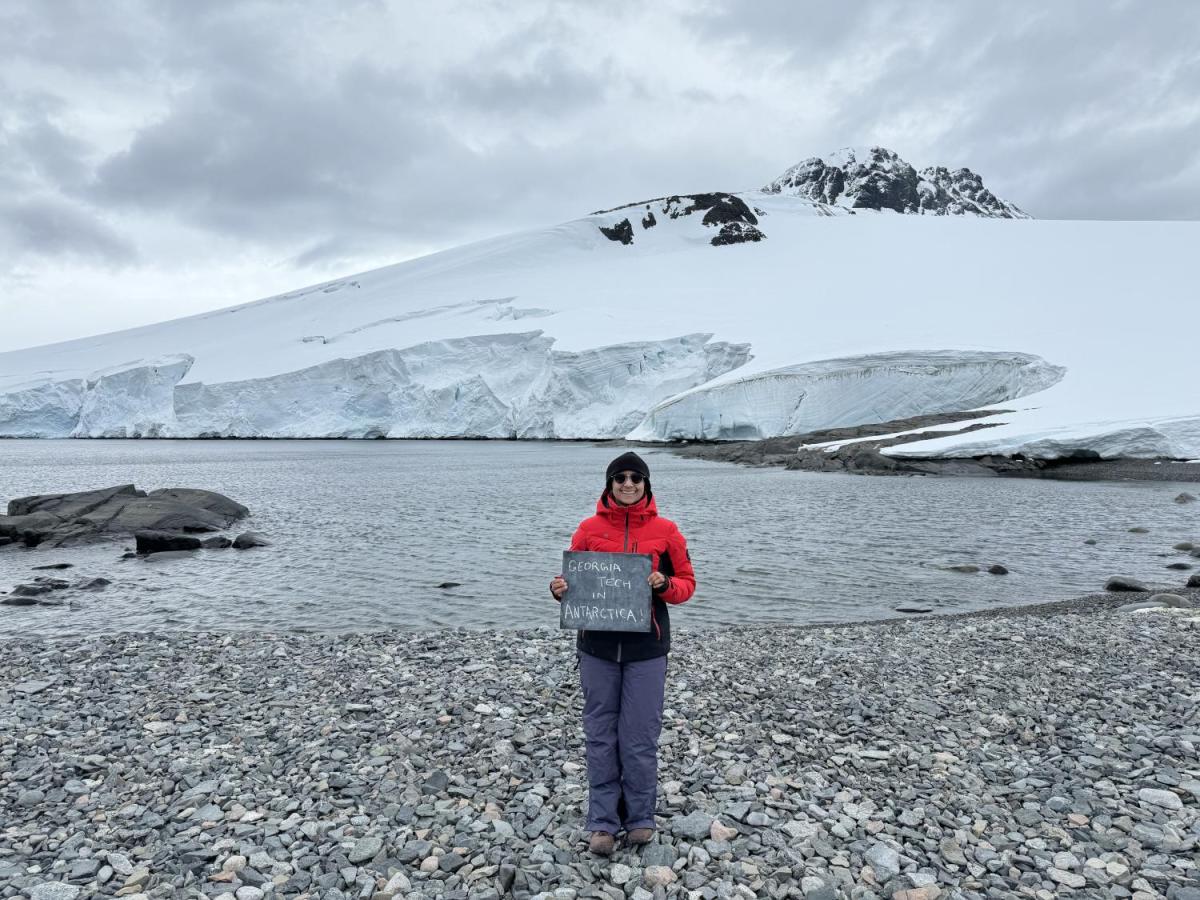
Ph.D. candidate Shweta Dutta ventured to the Turkish Antarctic Research base on Horseshoe Island, Antarctica, this past semester to track and better understand an enigmatic electromagnetic wave phenomenon called “whistlers”.
An Unexpected Journey
In the pursuit of a better understanding of the mysteries of science, nature, and the universe, there are times that call for an extraordinary journey. Charles Darwin's voyage on the HMS Beagle and NASA's Apollo moon missions represent such quests, requiring extensive travel to unlock new realms of knowledge.
For Shweta Dutta, a Ph.D. student at Georgia Tech, the pursuit of discovery recently led her to a place nearly as remote as possible — the Turkish Antarctic Research base on Horseshoe Island, Antarctica.
“The trip came about suddenly for me,” said Dutta, who traveled to Antarctica in February 2024. “The research project was proposed over a year ago and someone else in my lab was set to go to go, but a last-minute issue came up, and I was asked to go instead, with less than a month to departure.”
Dutta's expectations for her Spring 2024 semester quicky transformed from routine lab and research work under Professor Morris Cohen's Low Frequency Radio Group in the School Electrical and Computer Engineering to a multimodal journey leading to the edge of the Earth.
Gathering “Whistler” Data
Her specific task for the trip was to assess whether the Antarctic site could support the deployment of her lab’s very low frequency (VLF) antenna system. The antenna system would then gather evidence of a phenomenon called “whistlers” — electromagnetic waves that descend in frequency over time, originating from lightning strikes and very low frequency energy emitted through Earth’s upper atmosphere, known as the ionosphere.
“We care about whistler generation and dissipation because it shows us how nature deenergizes the Earth's upper atmosphere,” she said. “Extra energy and charged particles in the upper atmosphere can cause satellites orbiting the earth to degrade quickly or stop working entirely.”
For example, a strong solar storm could cause a huge loss of satellites and potentially knock out power grids on Earth, so researching ways to quickly discharge the upper atmosphere is key to keeping GPS systems running and having power on the ground in the event of such extreme conditions.
(text and background only visible when logged in)
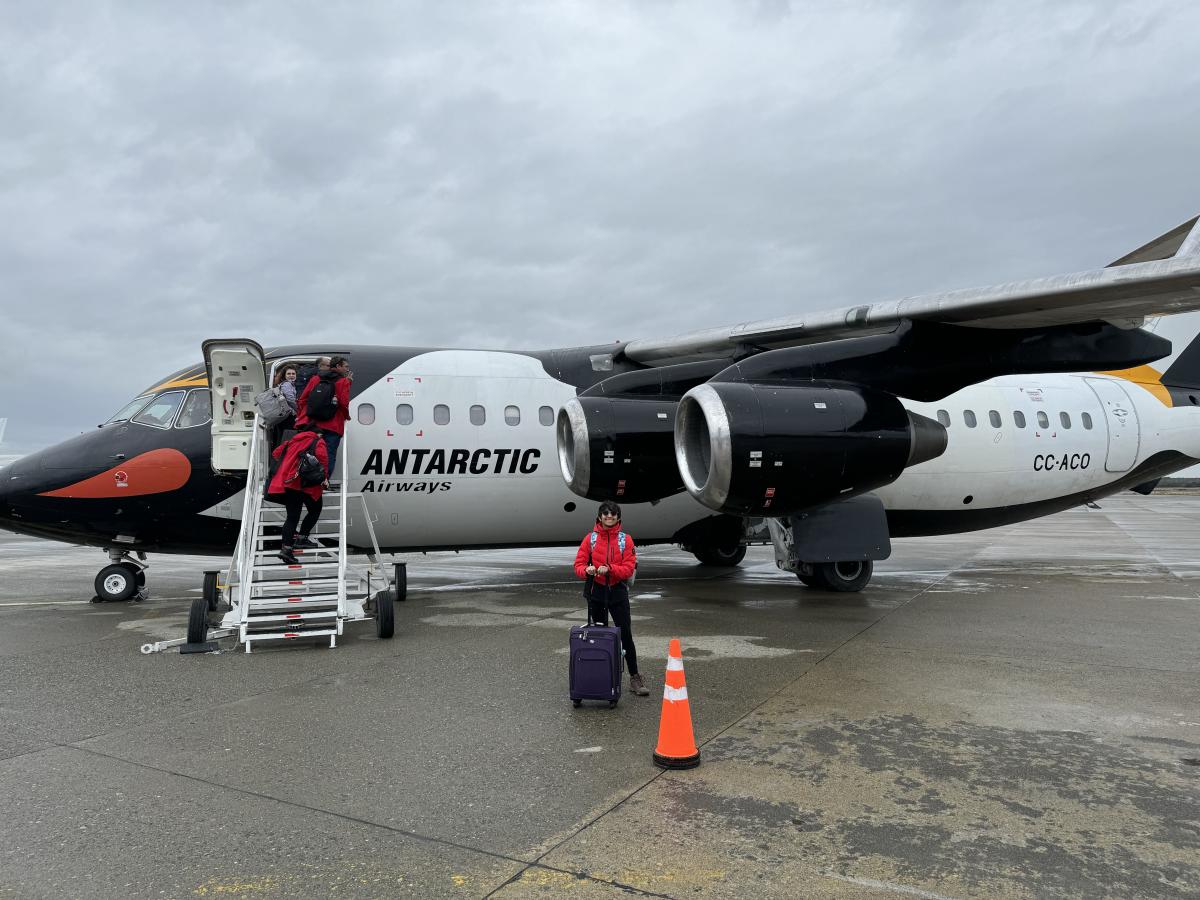
Dutta took a charter plane (pictured) from Punta Arenas, Chile to King George Island on the northern tip of the Antarctic peninsula before traveling by boat to Horseshoe Island.
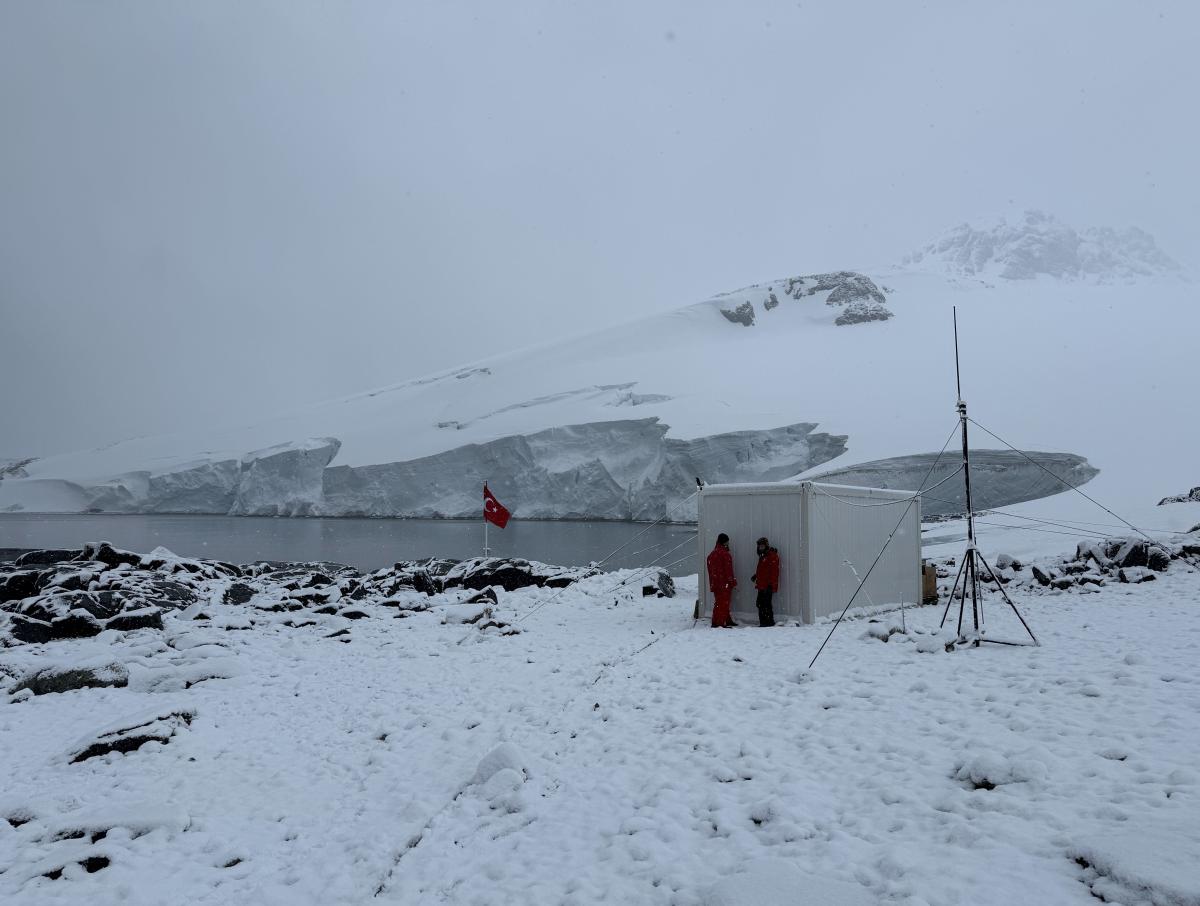
One of only three container buildings on the Turkish Antarctic Research base on Horseshoe Island, Antarctica.
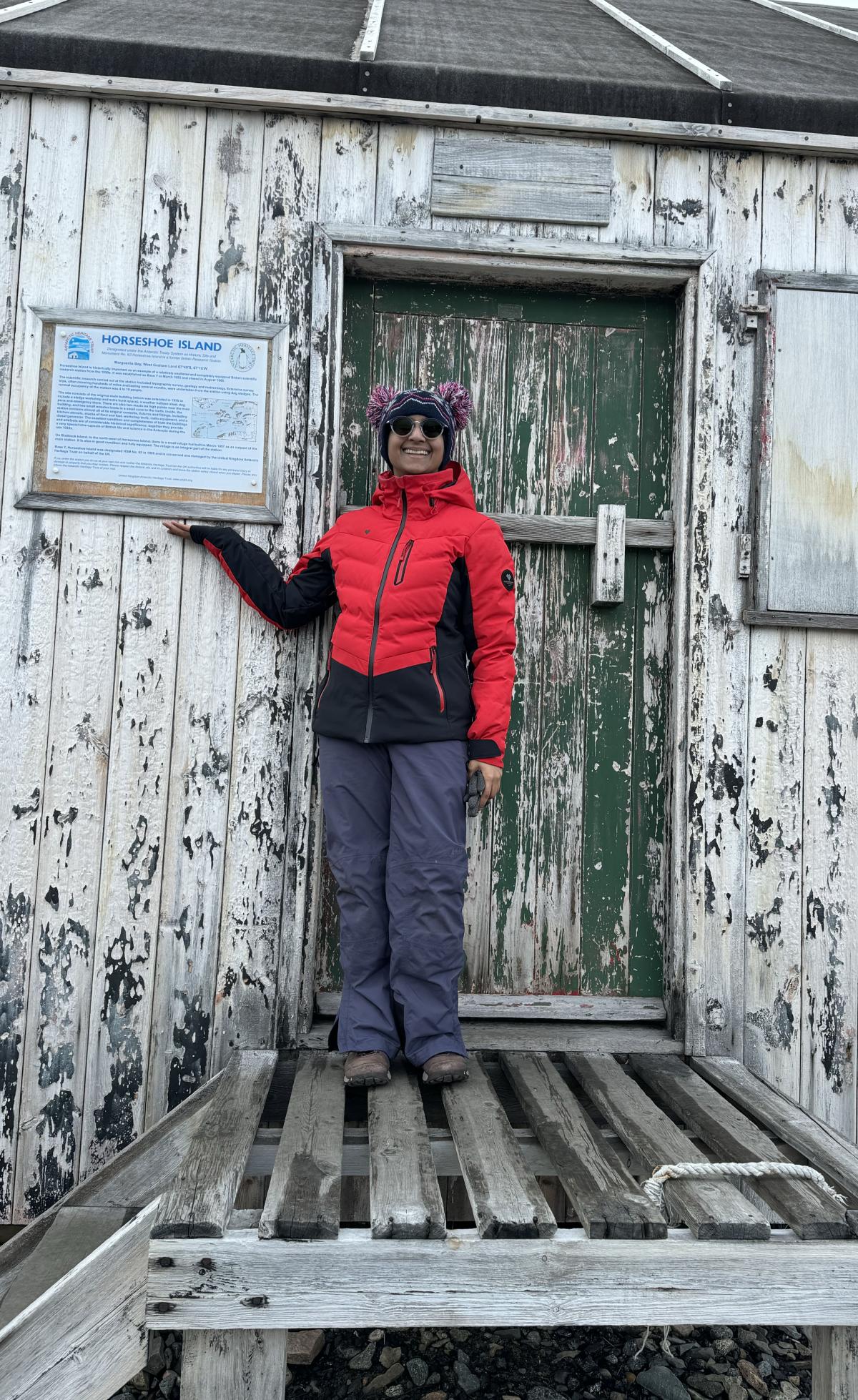
Shweta in front of original main building of an inactive British research base on the Horseshoe Island.
The trip started by flying from Atlanta to Santiago, Chile, to Punta Arenas, Chile. From there a charter plane operated by DAP (Developing Antarctic Projects) took Dutta to King George Island on the northern tip of the Antarctic peninsula. Finally, a ship named Betanzos transported her to Horseshoe Island.
Betanzos was home for Dutta, the only American, along with a Chilian crew and 25 fellow researchers — mostly geologists, chemists, biologist, and atmospheric scientists from around the world — for about four weeks. Every morning a tender boat would transport the scientists from the ship to Horseshoe Island and return in evening.
“Turkish, Spanish, and Bulgarian were spoken on board, but fortunately most everyone could talk to me in English,” Dutta said. “It was possible to make phone calls, so I talked to my family and boyfriend regularly, which was nice.”
The Perfect Location for Research (and Penguins)
Such a long journey and arduous research conditions is worth it for whistler researchers because its specific latitude and longitude is perfect to observe the VLF phenomena at the "base" of a magnetic field line over northeastern North America. With other receivers set up on the eastern seaboard of the U.S., the conjugate point where the researchers expect to see the same whistler wave is right at Horseshoe Island.
For now, all work at Horseshoe Island is only possible during the summer (it was summer in the southern latitudes of Antarctica when Dutta arrived). The sun was up for nearly 20 hours a day and low temperatures often just dipped below freezing.
The base is relatively new, having been established by Turkey in 2017, and at this point only consists of three container buildings that were built in 2019 and are powered during the day by generator. Until there are more buildings, water, and solar power, year-round operation will not be possible.
The Antarctic landscape, as unpredictable as it is breathtaking, offered Dutta encounters with penguins, leopard seals, whales, and skuas—a predatory seabird known for stealing penguin eggs.
“The biggest surprise was how curious the penguins can be; two of them were waddling right around the containers, squawking like chickens and investigating everything we were doing,” she said.

Shweta and fellow researchers exploring Horseshoe Island with sea lions in the foreground.
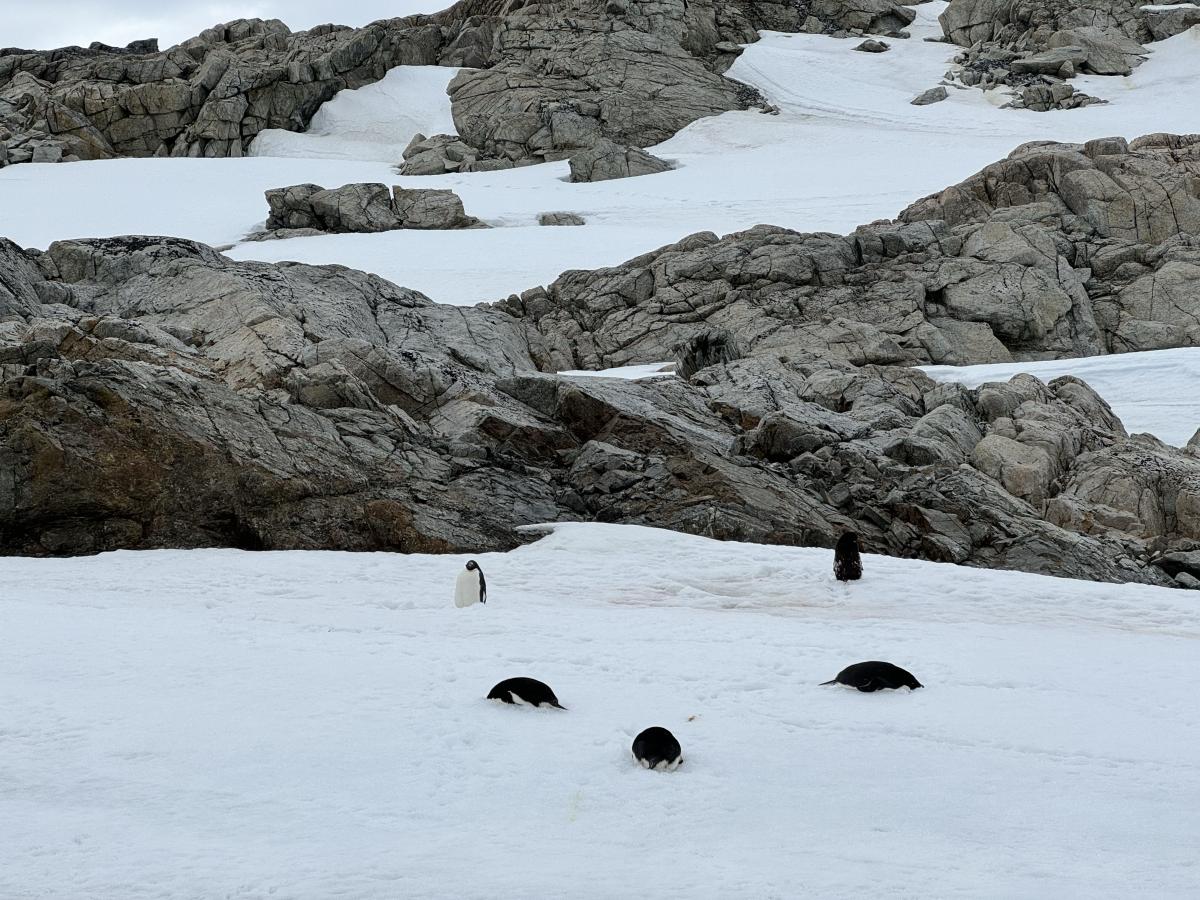
Penguins on Horseshoe Island, Antarctica.
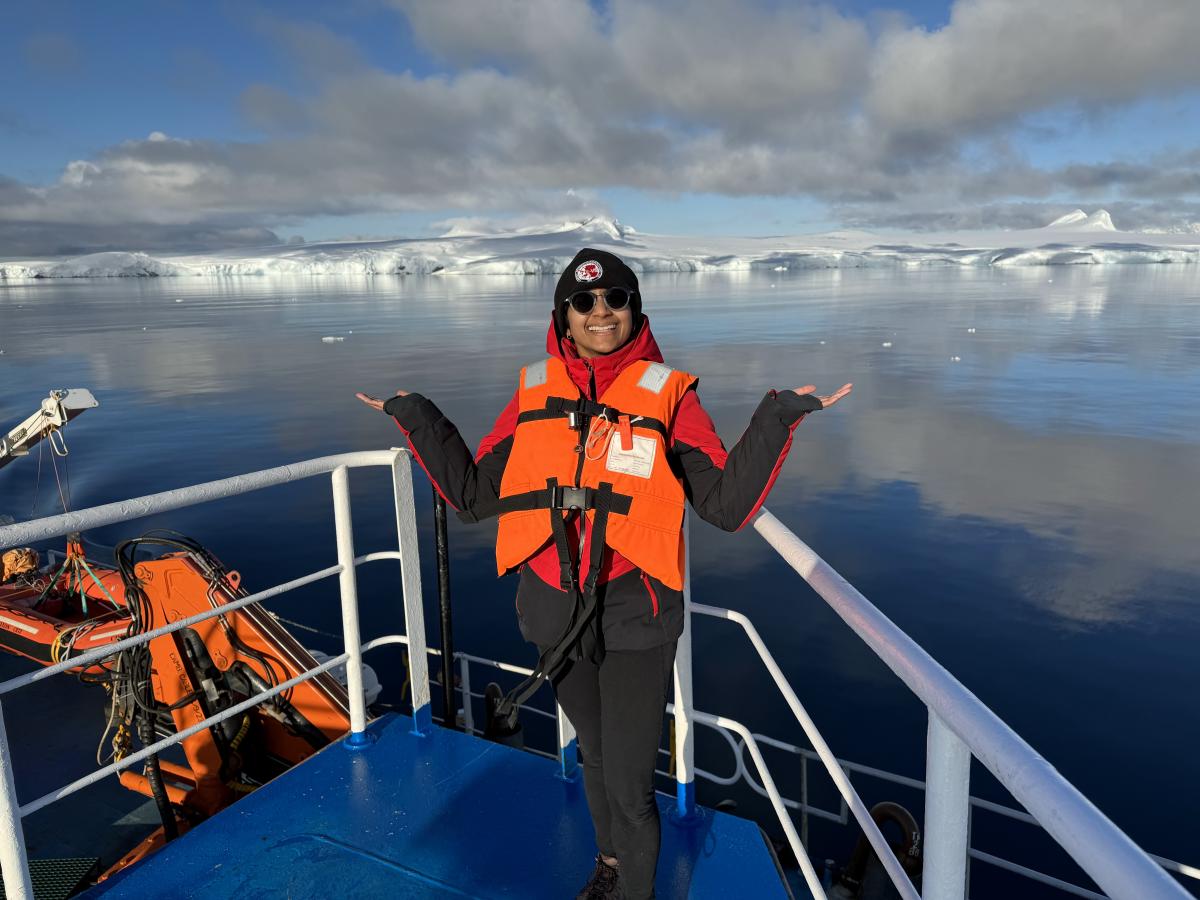
Shweta on the ship, Betanzos, the Ph.D. candidate's home base while researching in Antarctica.
The Return Home
After 14 days researching and with 800 gigabytes of initial data secured, Dutta prepared for the extended journey back home. However, unfavorable weather conditions forced the crew and researchers to remain on the continent for two additional days, as the plane couldn't take off from King George Island due to fog.
She finally returned to Georgia Tech on March 2, eager for the Low Frequency Radio Group to start assessing her findings.
As for future trips, Dutta emphasized the need for continuous data collection and analysis. She and her team hope to return with a battery-powered version of their receiver to record data continuously.
“For past research, I’ve traveled to Puerto Rico and a field in the middle of Kansas,” Dutta said. “This was a very, very different. I just keep saying, ‘wow,’ to myself. Being able to work in Antarctica as a Ph.D. student is going to be a highlight of my lifetime.”
(text and background only visible when logged in)
Related Content
ECE Ph.D. Candidate Returning to Alaska to Continue Transformative Atmospheric Research
Jeremiah Lightner returns to Alaska for a third time, he’s hoping it’ll help his research group accomplish a first in the realm of atmospheric research: to accurately create a top-to-bottom ionosphere model.
(text and background only visible when logged in)
Georgia Tech to Strengthen Nation’s Faculty Development in Geospace Science
Georgia Tech has been chosen by the National Science Foundation to hire a new faculty member focused on solar-terrestrial science and space weather research.
(text and background only visible when logged in)

